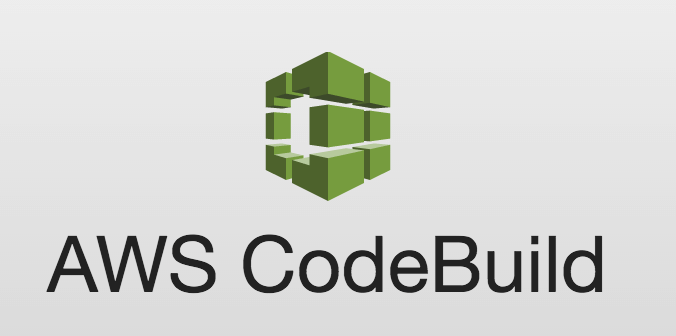
The Cloud, or Cloud Computing, as we know it has been around for quite a while. In fact it’s been around long enough for it to evolve into a comprehensive business tool that can take care of virtually every single aspect of business. And businesses have rightfully adopted cloud technology into their workflows, utilizing its elements to automate business functions and host data. But simply migrating business workloads into Cloud is proving to be increasingly insufficient as the world dives into an era of digital nativity. Times like this call for a shift in how businesses adopt cloud technology as well.
Table of Contents:
#1 What is Digital Nativity?
#2 What is Cloud Nativity?
#3 Cloud Nativity vs Cloud immigration
#4 How to achieve cloud nativity
#5 Cloud native technologies
#6 Cloud centered practices
#7 Curious to learn more? Check out these amazing related posts
What is Digital Nativity?
Like natives of a language are able to understand it, speak it and read it with effortless proficiency, digital natives are able to understand digital technologies completely and hence know how to utilize their fullest potential in achieving goals. This native-like fluency in digital technologies is what is known as “digital nativity”.

The need for digital technologies is only increasing, giving birth to a new generation of digitally affluent consumers in the commercial world. Therefore, for businesses, survival may mean diving a little deeper into the world of digital technologies.
What is Cloud Nativity?
When catering to the needs of a generation of digital native consumers, cloud based solutions are the most instrumental in providing the necessary efficiency, agility, redundancy and affordability. We’ve observed this when we talked about the value of cloud computing in global healthcare and mobile wallet technology. And while cloud immigration may help your business in the short term, thriving in the cloud arena in the long term takes more than just that. This is where the need for cloud nativity arises.

The definition of Cloud Nativity is similar to that of Digital Nativity. Whenever the term “Nativity” is used it conveys the users’ high level of fluency in utilizing a certain system or technology. In the case of cloud nativity it refers to how well businesses can achieve their goals by focusing on cloud technology as the centerpiece of all business operations and making business decisions with a cloud centered approach in mind.
Cloud Nativity vs Cloud immigration
Previously we mentioned how a simple cloud immigration may help your business only in the short term compared to the long term benefits of complete cloud nativity. But what does this actually mean? How do these two concepts differ from each other?
Consider the analogy of language again. If you have learnt a foreign language you will be using that language to communicate with other speakers of it. Be it when shopping, asking for directions, taking a call, sending a message etc. you will only be using the language to communicate and achieve an objective or complete a certain task. Your lifestyle, your opinions, your choices, your culture, your passions and aims, your morals and values will remain the same and not change based on the foreign language that you’re speaking.
But consider a native speaker of the language. Such a person has been born into a culture where that particular language is spoken by default and hence has shaped their lifestyle, opinions, choices, passions, aims, morals and values over a long period of time. Subconsciously, the centerpiece of their actions and goals, is their culture and everything else branches off from it. This is the same deal with cloud nativity vs cloud immigration.

Cloud immigrants are businesses who simply adopt cloud technology to help simplify their usual business operations. Nothing more, nothing less. They won’t change their business strategies, marketing strategies, business platforms, audience groups, product development strategies etc. based on the new technologies they adopt like the cloud technology.
Cloud natives however, are businesses who are capable of making cloud technology the centerpiece of their business operations and culture. So much so that their business goals, strategies, practices, platforms, audience groups, product categories, resourcing, supply chain, employee recruitment and everything in between are subject to change along with it.
Because the ever-evolving Cloud technology presents unlimited growth opportunities, businesses find themselves expanding, capturing new markets and gradually securing long term sustainability.
How to achieve cloud nativity
Cloud native technologies
In order for businesses to become cloud native it’s important for them to adopt cloud native technologies. These technologies include containers, microservices, continuous integration, secret management, logging, monitoring etc. The more of these cloud native tools are adopted by businesses the closer they get to deriving the fullest potential of cloud technology.
Here’s a breakdown of a few cloud native tools and technologies:
1. Containers

You can use apps like Docker which is offered by CloudCone as a one click application to deploy containers. Using containers helps you reduce team workflows and increase team compatibility and parity. Basically container technology is a key player when it comes to simplifying operations of your DevOps and allows smooth transfer of applications between various computing environments during different stages of development.
Ideal tools: Docker, Kubernetes, Virtual Box.
2. Microservices

This cloud native technology allows you to break down your website and cloud infrastructure into multiple separate services (booking, support, checkout etc.) which in turn allows you to customize and scale them on their own. This gives you more freedom to create the ideal user experience you wish your consumers to have by developing different elements of your website individually.
Ideal tools: API Fortress (API testing and management), Graylog (monitoring), Conductor (orchestration).
3. CI/CD (Continuous Integration/ Continuous Deployment)

This allows for you to execute automatic tests on your infrastructure in version control. When it comes to quality gates CI/CD allows developers to run unit tests and security tests. A key benefit of this technology is its ability to minimize errors while boosting efficiency with its automation. CI/CD also enables fault isolations that allow you to isolate bugs and other errors before they harm your system and cause issues.
Ideal tools: AWS CodeBuild, Jenkins, Azure DevOps.
4. Secret Management

Basically, privacy. A practice of a good cloud system is encrypting and protecting all private data and credentials. And encryption is not even the most mature method of secret management. Secret management uses highly secure techniques such as issuing temporary or rotating credentials to databases.
Ideal tools: Vault, Consul, CyberArk.
5. Logging
When it comes to system observability, logging is crucial. Observability is the ability to understand what is happening within a system. And logs are basically records of every event of your system that ultimately helps you understand how your system works and easily troubleshoot and debug your system before serious issues occur. Hence logging is also an important tool in debugging.
Ideal tools: Elastic stack (ELK stack), LogDNA, Loki
These technologies help keep your cloud based systems seamlessly connected and working smoothly, facilitating efficient cloud centered decision making and operational planning.
Cloud centered practices
1. Align your goals with your reasons
If you look closely, reasons and goals aren’t so disconnected as they may seem. Of course, reasons represent the past and goals, the future but the moment you start seeing them as one, it opens up many possibilities as to what you can do with the resources you’ve been given.
The strategies and plans you have for your newly implemented cloud system have to be designed with the reasons as to why you moved in the first place, in mind. This way you’ll be able to make the cloud experience worthwhile and would not be wasting any resources you’ve acquired.
2. Stay updated on Cloud computing
To be a true native of the cloud you’ve got to move with the technology and go where it goes. Stay on top of your cloud research and find out what new aspects of the technology you can use to derive the optimal benefits for your business. While it helps to follow tech news and innovators it will also come in handy to follow your rivals and competitors to figure out what they’re doing. Then instead of copying them, do it differently and do it better.
Keeping up with cloud trends also helps you identify future new markets that you can expand into using the latest innovations in cloud technologies.
3. Put together a well-informed and passionate IT team
You may be all good with your visions, missions, and strategies but you need a strong team of skilled IT professionals to put into action what you’ve envisioned. Make sure to assemble the most qualified team of experts to handle your cloud infrastructure and also make sure to establish a rapport with them. Stay in communication with your IT team and seek their input on strategic implementations so that plans run smoothly from inception to execution.
With a well executed cloud adoption strategy any businesses can aim to become a key player in the industry. That is because cloud is now evolving and has the ability to provide a wide range of opportunities for businesses to grow in a world of digitally affluent consumers. To deploy a dedicated cloud environment for your business you can implement our private cloud solution.

Curious to learn more? Check out these amazing related posts:
Container technology is important when going cloud native. And you can deploy containers with Docker on our one-click app platform. Check out all our other one-click apps to experience a truly seamless workflow. Here’s a detailed breakdown of all our one-click apps.
And while you’re thinking of going cloud native, here’s a mobile app trend that you can look into: Mobile wallets. With contactless technologies taking over the future this may be an interesting concept for your business. Read our post on this technology.
Looking for more development ideas? Here’s another trend on the rise: Healthcare apps. With the healthcare industry facing an unexpected spike in demand, the ability to obtain remote healthcare services is becoming crucial. Here’s our take on cloud healthcare in 2021
That ends today’s post. Reach out to us if you have any concerns, suggestions, or general feedback.







About The Author: Anu
Content Strategist at CloudCone LLC.
More posts by Anu